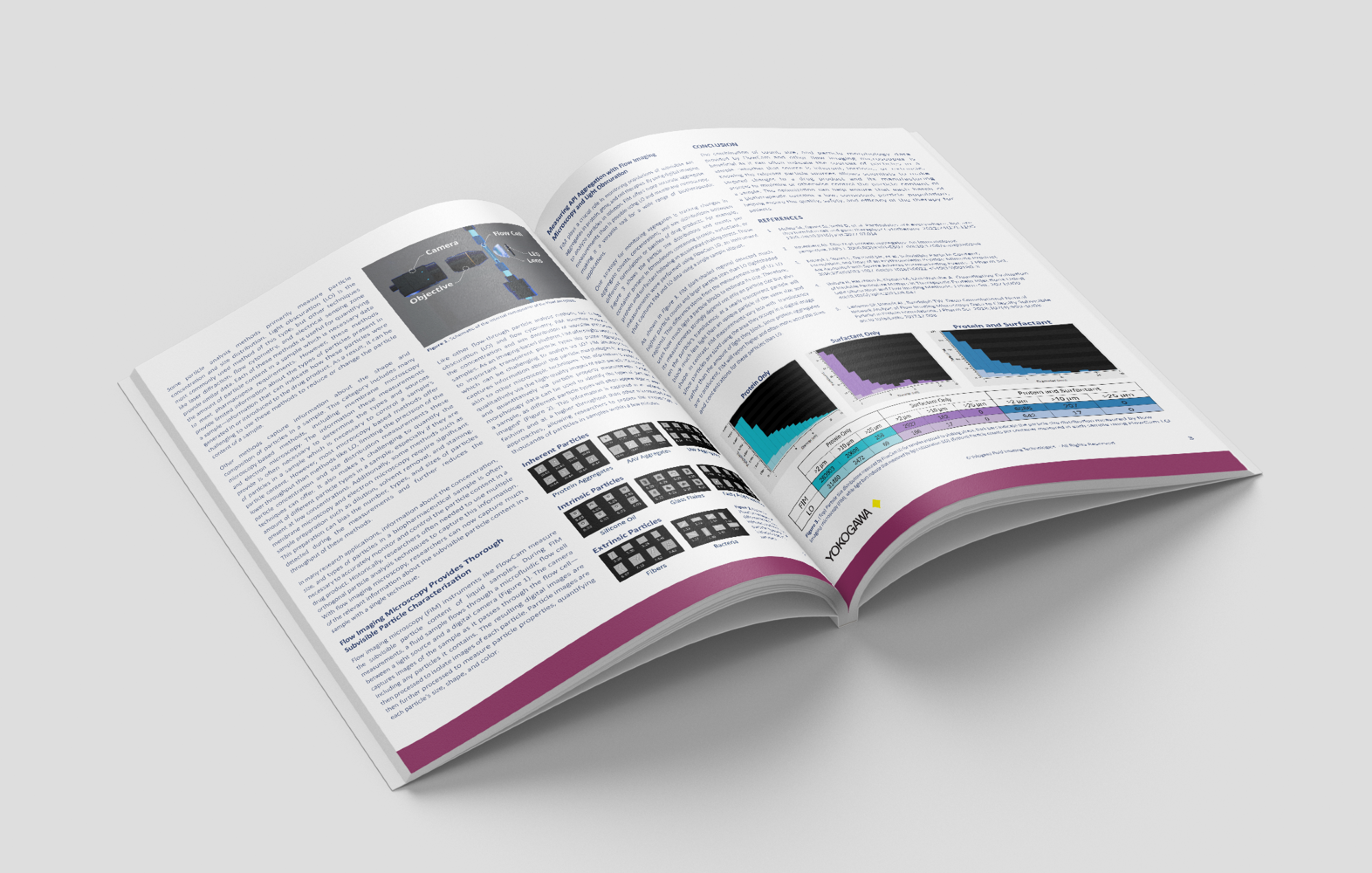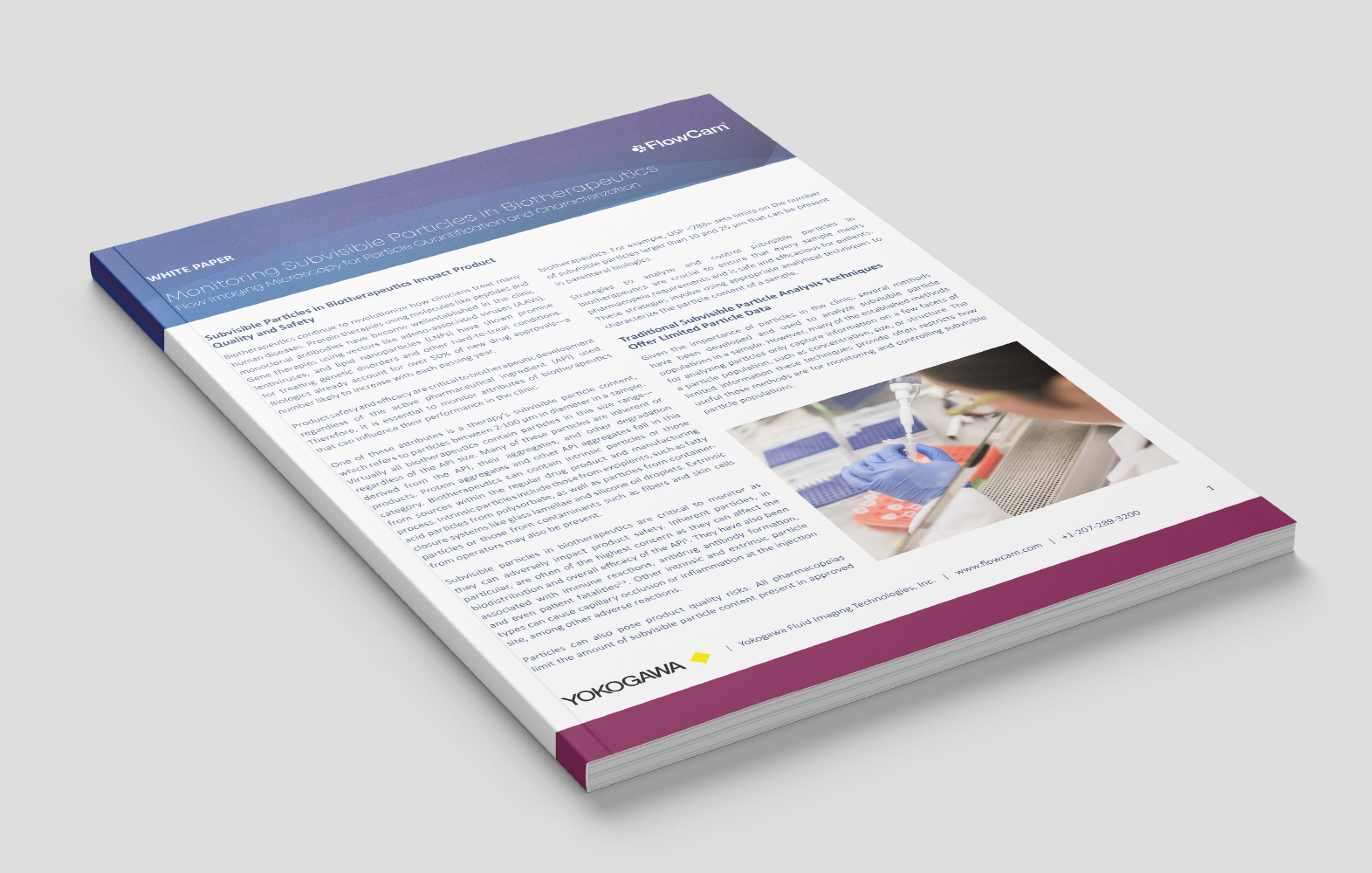Subvisible particles have the potential to impact efficacy, safety, and regulatory compliance throughout the field of biotherapeutics. Conventional particle analysis methods only provide particle sizing and count data, making it especially challenging to trace the source of specific particulates.

Yokogawa Fluid Imaging Technologies has published a free white paper outlining the advantages of using Flow Imaging Microscopy (FIM) to analyze subvisible particles in biologics applications.
Download the WhitePaper
This comprehensive, high-throughput analytical solution provides morphology data alongside counts and sizing, with the white paper also exploring how FIM:
- Improves drug product quality and safety
- Detects, characterizes, and identifies contaminants and API aggregates present in samples
- Provides richer data than traditional methods, such as light obscuration
- Supports regulatory compliance

Yokogawa Fluid Imaging Technologies’ new white paper offers valuable insight into optimizing biologic drug development and ensuring patient safety.
Download the full article
Acknowledgments
Produced from materials originally authored by Yokogawa Fluid Imaging Technologies, Inc.
About Yokogawa Fluid Imaging Technologies, Inc.
At Yokogawa Fluid Imaging Technologies our mission is to bring clarity and focus to the study of subvisible particles in the life sciences. With our FlowCam technology, we are committed to developing innovative hardware and software to monitor Earth’s water bodies and drinking water supply for hazardous algae, to help make vaccines and injectable medicines safer, and to improve product quality in a variety of applications.
FlowCam instruments combine the benefits of digital imaging, flow cytometry, and microscopy into a single solution - Flow Imaging Microscopy (FIM). Beyond traditional particle sizing and counting, FIM's image-based analysis allows for comprehensive characterization of subvisible API aggregates and contaminants in biopharmaceuticals, mammalian cells, microplankton, emulsions, and advanced materials. FlowCam instruments have been deployed in over 50 countries, supporting research, development, and environmental monitoring in the life sciences, materials research, and industrial applications.
In the video below you will learn about flow imaging microscopy and how FlowCam works to provide count, size, characterization, and digital images of subvisible particles.
FlowCam Explainer Video - What is Flow Imaging Microscopy?
Sponsored Content Policy: News-Medical.net publishes articles and related content that may be derived from sources where we have existing commercial relationships, provided such content adds value to the core editorial ethos of News-Medical.Net which is to educate and inform site visitors interested in medical research, science, medical devices and treatments.